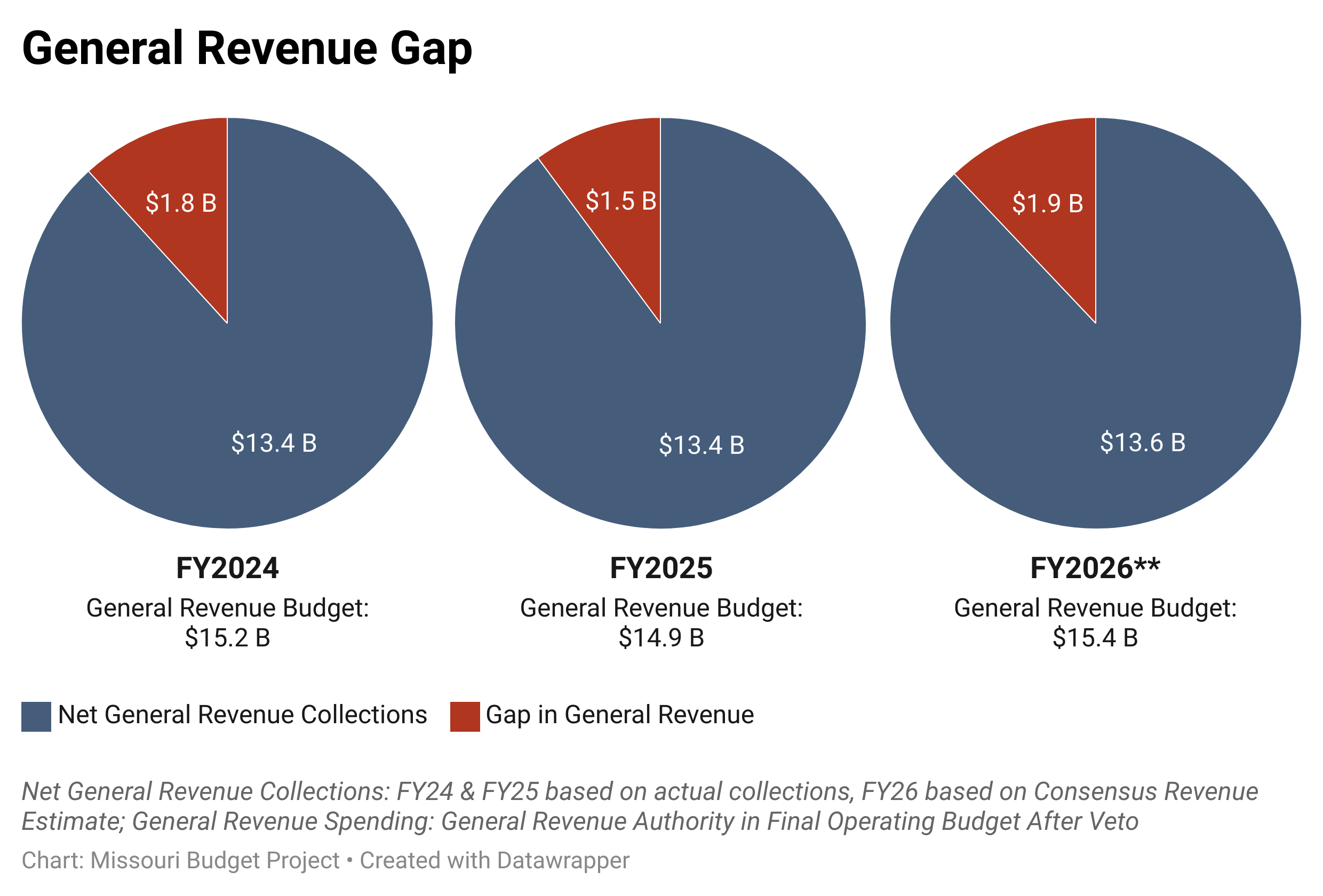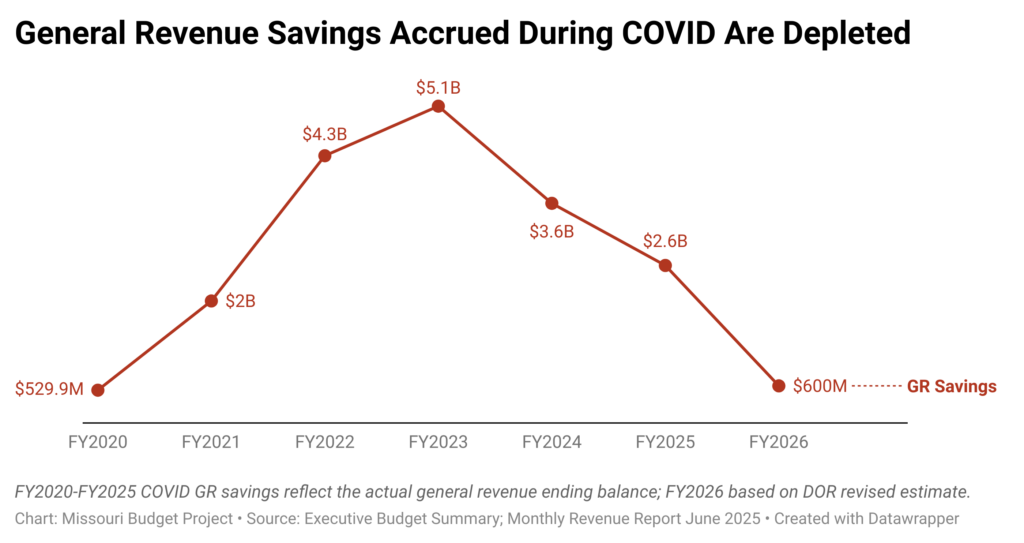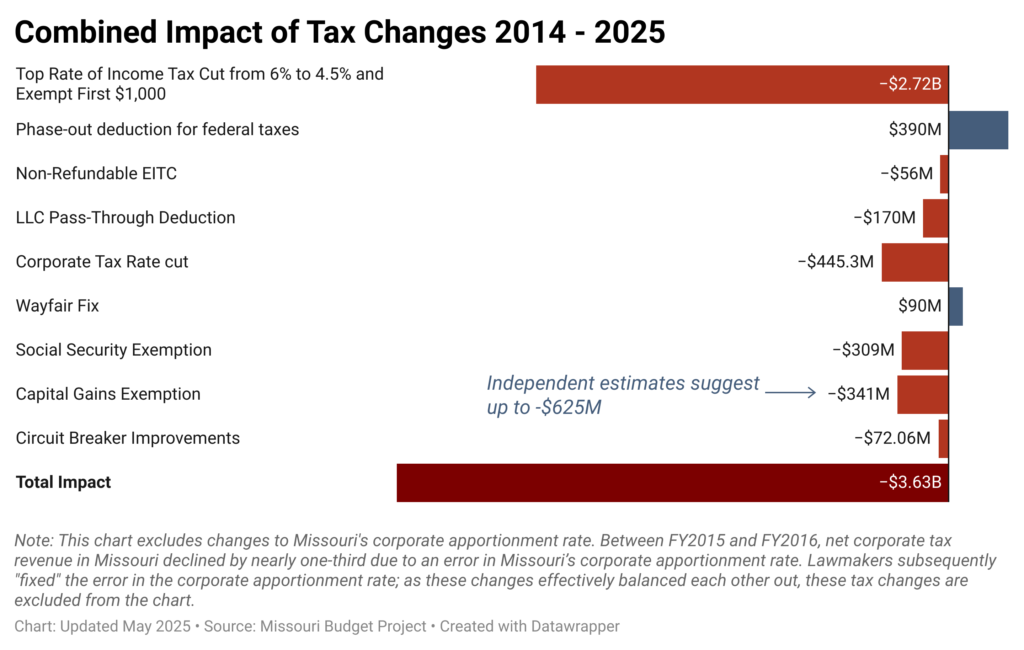Governor Kehoe recently announced that Missouri expects a $1 billion shortfall in general revenue in FY 2027. This shortfall is expected mostly because of the implementation of previously passed tax cuts. COVID-related savings temporarily masked the shortfall, and this budget gap has grown as state legislators continued to approve additional tax cuts. The recently passed federal budget cuts will magnify this gap.
Over the past five years, extraordinary federal funds designed to address the health and economic impacts of COVID have been flowing through Missouri’s state budget. This boosted the economy and allowed Missouri to stockpile billions of dollars in general revenue. These federal dollars were used to pay for investments in infrastructure, ongoing expenses, and expansions of existing programs. As that federal funding comes to an end, Missouri faces a significant budget cliff. Several dynamics have converged that led to this projected shortfall:
Missouri Used Savings Accrued During COVID to Fill Gaps in the State Budget
In Fiscal Year 2026, Missouri’s general revenue budget is $15.4 billion – but the state only expects to generate $13.6 billion in state general revenue dollars – a gap of nearly $2 billion that is currently being paid for with the savings accrued during COVID.

The savings accrued during COVID have now been largely depleted, at the same time as Missouri’s general revenue collections have begun to flatline. This means that Missouri must fill this gap in revenue to maintain services at current levels, or be forced to cut services.

Lawmakers Have Passed Costly Tax Cuts While Also Approving Legislation that Increases Costs
The general revenue savings accrued during COVID temporarily masked the impact of flatlining state tax revenue caused by a series of tax cuts passed over the last decade. These tax cuts are still in the process of being implemented and will reduce state general revenue by more than $3.6 billion per year when fully phased in. In context, that amount is more than 26% of the state general revenue Missouri will collect in FY2026.
At the same time, state lawmakers have passed legislation that improves funding for local schools and childcare assistance, increasing costs at a time when revenue has flatlined.

Federal Budget Reconcilation Act Will Cost Missouri Hundreds of Millions Annually
In addition, deep cuts to federal funding for health care and food assistance will require increased state dollars to maintain current levels of service. This means that at the same time that Missouri’s general revenue collections have flatlined due to state tax cuts, federal budget cuts will require Missouri to pay more just to maintain critical services like Medicaid and SNAP.
Though working Missourians and the middle class taxpayers will bear the brunt of the service cuts that will likely occur to balance the budget, most of the tax cuts passed by Missouri legislators have disproportionately benefitted the wealthiest taxpayers. Our state’s upside-down tax system currently asks the least from those with the most and vice-versa.
Policymakers made the choices that created this shortfall. They can choose a better path by ensuring that the wealthiest and corporations pay their fair share instead of balancing the budget on the backs of working Missourians.

